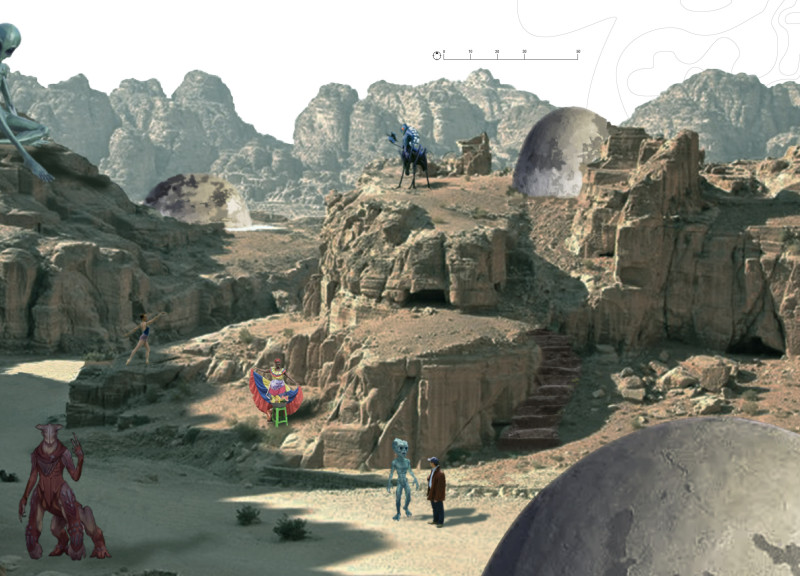5 key facts about this project
The Humanity Pavilion stands within a historically significant landscape that has witnessed the movements of early humans. Designed as a series of interconnected domes, the Pavilion embodies themes of unity and inclusivity important to human culture. The overall concept emphasizes interaction among visitors while providing spaces for reflection and learning.
Design Concept
The Pavilion’s design pays tribute to its historical context, creating a conversation between the past and the present. Visitors follow trails that lead to various areas dedicated to knowledge and memory, enhancing engagement and promoting cultural exchange. This thoughtful layout makes the Pavilion a space for dialogue among individuals from diverse backgrounds.
Spatial Organization
Upon entering, guests encounter galleries that hold rich narratives of human culture, which are revealed through exploration. This layered experience draws visitors into the stories contained within, matching the Pavilion’s mission to educate people about shared histories. The arrangement of spaces is carefully considered to provoke curiosity and foster connections with the exhibited material.
Performance Area
A key feature of the Pavilion is its performance stage, designed for presentations from various cultural backgrounds. This stage facilitates dialogue and exchange, allowing different perspectives to meet in one location. Adding this performance area encourages lively interactions between those taking part and those observing, which enhances the overall visitor experience.
Interactive Learning Spaces
In addition to the performance area, the Pavilion includes dedicated spaces for interactive workshops that focus on hands-on learning. These areas invite visitors to engage deeply with themes related to human history and culture. The presence of these spaces reflects the Pavilion's commitment to fostering an educational atmosphere, making it a valuable venue for community engagement.
The Pavilion also incorporates comfortable relaxation areas where visitors can enjoy light refreshments while taking in views of the surrounding landscape, emphasizing the connection between the building and its natural environment.



















































